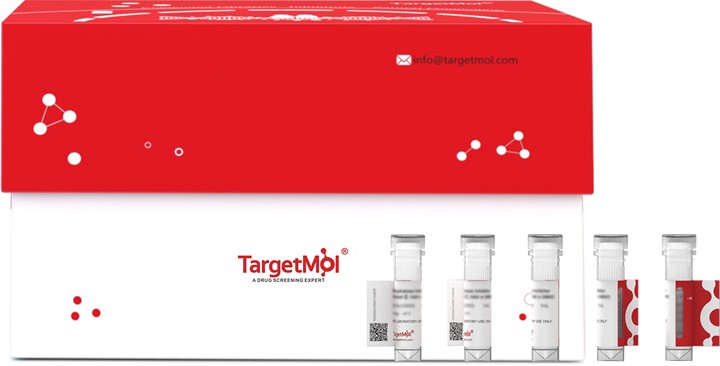 Your shopping cart is currently empty
Your shopping cart is currently empty
BLK Protein, Human, Recombinant (His)
Tyrosine-Protein Kinase Blk (BLK) contains one protein kinase domain, one SH2 domain and one SH3 domain. BLK is a non-receptor tyrosine kinase, which is involved in B-lymphocyte development, differentiation and signaling. B-cell receptor (BCR) signaling requires a tight regulation of several protein tyrosine kinases and phosphatases, and associated coreceptors. Signaling through BLK plays an important role in transmitting signals through surface immunoglobulines and supports the pro-B to pre-B transition, as well as the signaling for growth arrest and apoptosis downstream of B-cell receptor. Defects in BLK are a cause of maturity-onset diabetes of the young type 11 (MODY11).

BLK Protein, Human, Recombinant (His)
| Pack Size | Price | USA Warehouse | Global Warehouse | Quantity |
|---|---|---|---|---|
| 5 μg | $80 | 7-10 days | 7-10 days | |
| 10 μg | $129 | 7-10 days | 7-10 days | |
| 20 μg | $198 | 7-10 days | 7-10 days | |
| 50 μg | $390 | 7-10 days | 7-10 days | |
| 100 μg | $626 | 7-10 days | 7-10 days | |
| 200 μg | $987 | 7-10 days | 7-10 days | |
| 500 μg | $1,900 | 7-10 days | 7-10 days | |
| 1 mg | $2,730 | 7-10 days | 7-10 days |
Product Information
| Biological Activity | Activity has not been tested. It is theoretically active, but we cannot guarantee it. If you require protein activity, we recommend choosing the eukaryotic expression version first. |
| Description | Tyrosine-Protein Kinase Blk (BLK) contains one protein kinase domain, one SH2 domain and one SH3 domain. BLK is a non-receptor tyrosine kinase, which is involved in B-lymphocyte development, differentiation and signaling. B-cell receptor (BCR) signaling requires a tight regulation of several protein tyrosine kinases and phosphatases, and associated coreceptors. Signaling through BLK plays an important role in transmitting signals through surface immunoglobulines and supports the pro-B to pre-B transition, as well as the signaling for growth arrest and apoptosis downstream of B-cell receptor. Defects in BLK are a cause of maturity-onset diabetes of the young type 11 (MODY11). |
| Species | Human |
| Expression System | E. coli |
| Tag | C-6xHis |
| Accession Number | P51451 |
| Synonyms | Tyrosine-Protein Kinase Blk,p55-Blk,BLK,B Lymphocyte Kinase |
| Amino Acid | Gly2-Pro505 |
| Construction | Gly2-Pro505 |
| Protein Purity | Greater than 85% as determined by reducing SDS-PAGE. (QC verified) |
| Molecular Weight | 50-65 KDa (reducing condition) |
| Endotoxin | < 0.1 ng/µg (1 EU/µg) as determined by LAL test. |
| Formulation | Supplied as a 0.2 μm filtered solution of 20 mM Tris-HCl, 500 mM NaCl, 1 mM DTT, pH 7.4. |
| Stability & Storage | Lyophilized powders can be stably stored for over 12 months, while liquid products can be stored for 6-12 months at -80°C. For reconstituted protein solutions, the solution can be stored at -20°C to -80°C for at least 3 months. Please avoid multiple freeze-thaw cycles and store products in aliquots. |
| Shipping | Shipping with blue ice. |
| Research Background | Tyrosine-Protein Kinase Blk (BLK) contains one protein kinase domain, one SH2 domain and one SH3 domain. BLK is a non-receptor tyrosine kinase, which is involved in B-lymphocyte development, differentiation and signaling. B-cell receptor (BCR) signaling requires a tight regulation of several protein tyrosine kinases and phosphatases, and associated coreceptors. Signaling through BLK plays an important role in transmitting signals through surface immunoglobulines and supports the pro-B to pre-B transition, as well as the signaling for growth arrest and apoptosis downstream of B-cell receptor. Defects in BLK are a cause of maturity-onset diabetes of the young type 11 (MODY11). |
Dose Conversion
Calculator
Tech Support
| Size | Quantity | Unit Price | Amount | Operation |
|---|

Copyright © 2015-2025 TargetMol Chemicals Inc. All Rights Reserved.



